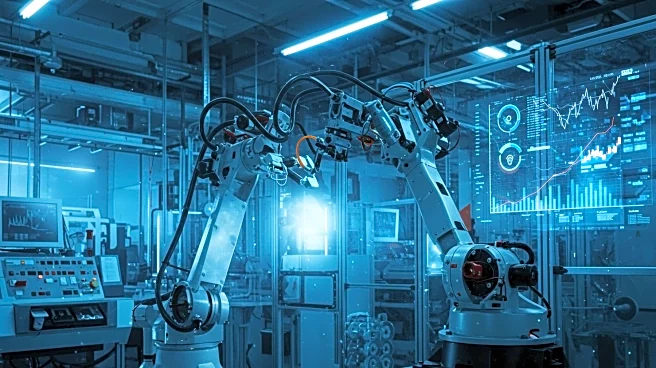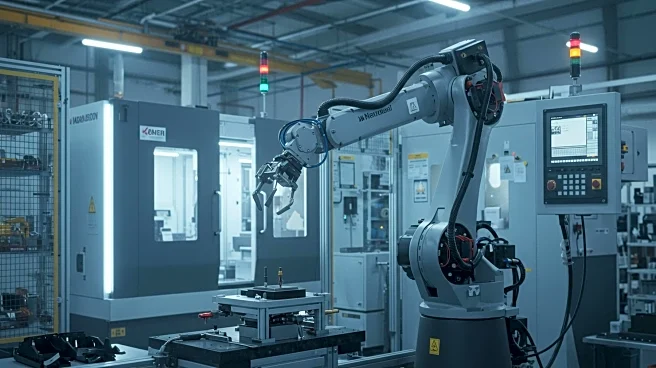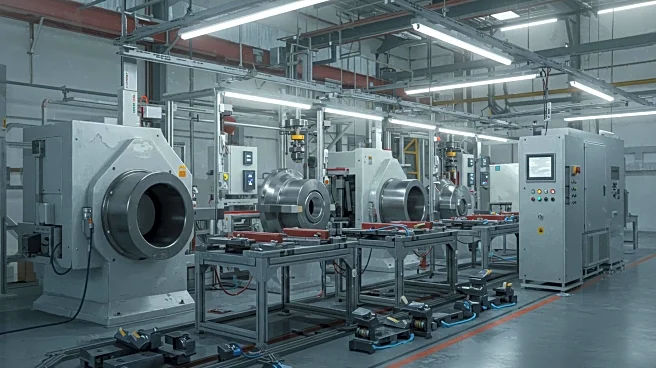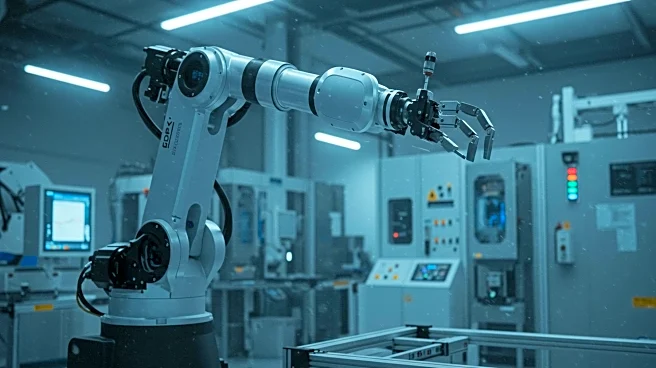What is the story about?
What's Happening?
The manufacturing sector is experiencing heightened scrutiny in investment decisions due to a mix of economic pressures, including tariff uncertainty, wage reforms, labor shortages, and supply chain fragility. Companies are cautious about making major investments without clear, measurable outcomes that directly impact operational or financial performance. This cautious approach reflects a broader mood of risk aversion, as businesses aim to maintain stability rather than pursue new ventures. Investment decisions are increasingly based on specific, tangible outcomes rather than alignment with strategic goals alone. This shift is particularly evident in labor-intensive industries facing rising costs from wage and tax reforms, where investments must enhance efficiency and service delivery.
Why It's Important?
The shift in investment strategy within the manufacturing sector has significant implications for economic stakeholders. By focusing on optimization rather than transformation, businesses aim to improve efficiency and resilience without incurring unnecessary risks. This approach could lead to incremental improvements in planning, forecasting, and workflow automation, potentially enhancing competitiveness. However, the cost of inaction remains a concern, as delaying innovation may result in falling behind competitors and missing out on efficiency gains. The emphasis on supply chain resilience and technology that solves real problems highlights the need for strategic investments that support continuity and competitiveness in a financially sustainable manner.
What's Next?
Manufacturers are expected to continue prioritizing investments that offer clear solutions and measurable results. This includes enhancing existing systems and incorporating artificial intelligence where it can streamline processes and improve customer response times. The focus on supply chain resilience may lead to reconsideration of production locations, such as reshoring or nearshoring, to improve speed and flexibility. Industry collaboration and partnerships with educational institutions are likely to play a crucial role in addressing shared challenges, such as labor shortages and skills development. Sustained focus and coordinated efforts will be necessary to move from ambition to action in improving productivity and supply chain flexibility.
Beyond the Headlines
The cautious investment approach in manufacturing reflects broader economic uncertainties that impact decision-making across industries. The emphasis on resilience and efficiency highlights the importance of strategic planning in navigating global disruptions. As businesses seek to balance risk and reward, the role of technology in driving measurable outcomes becomes increasingly critical. The focus on shared challenges and solutions underscores the need for industry-wide collaboration to build a stronger talent pipeline and address long-term capability needs.
AI Generated Content
Do you find this article useful?











